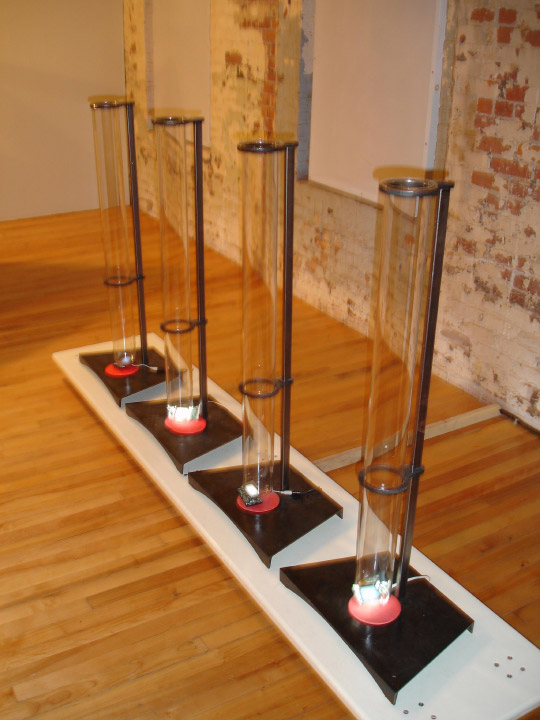In previous units, we learned about multidisciplinary projects that involve fields such as mathematics and robotics. Biology is a completely different field that deals with tangible, living organisms. Biology is the study of life, which immediately raises ethical questions regarding BioArt because life is much more intricate and complex than a robot; all lives must be respected and treated properly.
 |
| DNA- carries our genetic information. |
 |
| Alba, the GFP Bunny |
 |
| Kathy High's Embracing Animal project |
While the creativity of an artist is a great strength, it does come with ramifications if properly misused. There will always exist “hackers” that try to reconfigure the system from within and push the boundaries of creativity beyond what is ethically and morally acceptable (Kelty). Thus, BioArt should be regulated and limited out of respect for life and the protection of life.
Sources:
High, Kathy. “Embracing Animal.” http://kathyhigh.com/project-embracing-animal.html. Accessed 13 May 2018.
Kac, Eduardo. “GFP Bunny.” http://www.ekac.org/gfpbunny.html#gfpbunnyanchor. Accessed 13 May 2018.
Kelty, Chris. “Meanings of Participation: Outlaw Biology?” 2010, pp. 1-8.
Levy, Ellen. “Defining Life: Artists Challenge Conventional Classification.” Context Providers: Condition of Meaning in Media Arts. Intellect Ltd, 2011, pp. 1-22.
Vesna, Victoria. “5 bioart pt1 1280x720.” YouTube, uploaded by uconlineprogram, 13 September 2013, https://www.youtube.com/watch?v=PaThVnA1kyg.
Vesna, Victoria. “5 BioArt pt 3.” YouTube, uploaded by uconlineprogram, 17 May 2012, https://www.youtube.com/watch?list=PL9DBF43664EAC8BC7&v=3EpD3np1S2g.
Image Sources:
Kac, Eduardo. “GFP Bunny.” http://www.ekac.org/gfpbunny.thumbnail.jpg. Accessed 13 May 2018.
High, Kathy. “Embracing Animal.” http://www.embracinganimal.com/install/06installation.jpg. Accessed 13 May 2018.
https://briandcolwell.com/wp-content/uploads/2017/06/c3b336da-3353-4646-8ff1-76425b97a629.jpg. Accessed 13 May 2018.
I had heard about scientists performing experiments on mice and always wondered about the way in which it was done. I found it quite ironic that someone could inject mice with a type of cancer yet still say they were treated empathetically. As much as I appreciate that this research may help humanity, I hope that better ways of creating cures are discovered in the future. I agree with your thoughts on men though artists have great strengths, their are ramifications to their actions and they have to remember that these animals have emotions and feelings as well.
ReplyDeleteI definitely agree that the purpose behind using organisms to create BioArt compared to using organisms to research cures are two starkly different motives. While the end goal of using organisms in science is to gather information to help the world, I worry about the end goal some artists may have. In order to get a reaction out of a viewer, some artist's go to great lengths to express their message. In BioArt, I understand when an artist will augment themselves because they have a right to their own body. But bringing those same augmentations to other living organisms who can't speak for themselves is a different topic. The FDA controls what occurs in science, but as far as I know artists have no such governing body. Perhaps as BioArt develops, rules will be set in place to put limits on what constitutes "art" and what is "abuse."
ReplyDelete